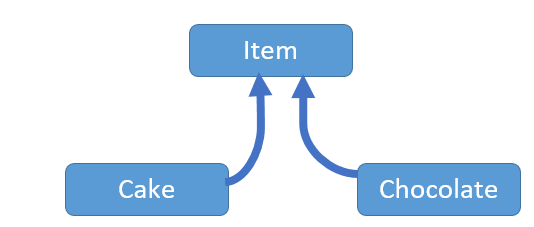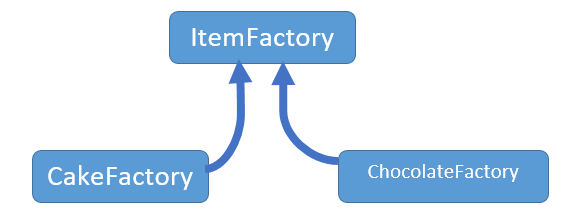I am learning design patterns newly & I am trying to understand the difference between Simple Factory & Factory Method Pattern. First I want to clear that , I tried reading lot of articles from Stack-overflow and other sites regarding the same but that doesn't helped me.
Here is my question:
Lets consider I have a product hierarchy as shown below:

I have written a simple Factory class as shown below
public class SimpleItemFactory {
static Item getItem(String type) {
if(type.equals("Cake")) {
return new Cake();
}else if(type.equals("Chocolate")) {
return new Chocolate();
}else {
return null;
}
}
}
so now I have all the object creation in one place , so if tomorrow any changes occurs[Like constructor needs one parameter] we need to change in only one place. But it breaks OPEN CLOSED principle as if tomorrow we add more item we need to change getItem() methods if condition. So we go for Factory Method Pattern

We create Factory class as shown below:
public abstract class ItemFactory {
abstract Item getItem();
}
class CakeFactory extends ItemFactory {
@Override
Item getItem() {
return new Cake();
}
}
class ChocolateFactory extends ItemFactory {
@Override
Item getItem() {
return new Chocolate();
}
}
class Client{
public static void main(String[] args) {
Item chocolate = new ChocolateFactory().getItem();
System.out.println(chocolate);
}
}
Now when the client want to add new Item called IceCream, they just create new Factory called IceCreamFactory and create IceCream from that as shown below:
class IceCreamFactory extends ItemFactory{
@Override
Item getItem() {
return new IceCream();
}
}
class Client{
public static void main(String[] args) {
Item iceCream = new IceCreamFactory().getItem();
System.out.println(iceCream);
}
}
Is my understanding correct? We satisfied Open closed principle here, but for each product(Item) we need one Factory class, does not it become manageable nightmare?
NOTE: Article I was referring https://www.codeproject.com/Articles/1135918/Factory-Patterns-Factory-Method-Pattern?msg=5380215#xx5380215xx
